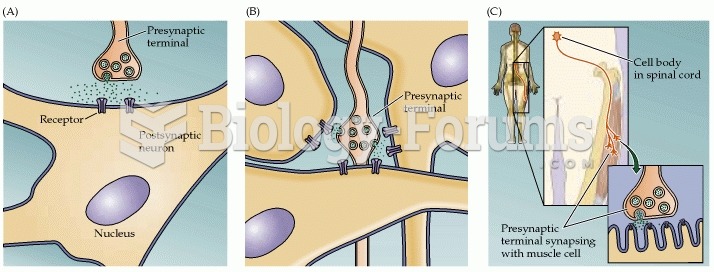|
|
|
Bacteria have flourished on the earth for over three billion years. They were the first life forms on the planet.
Human stomach acid is strong enough to dissolve small pieces of metal such as razor blades or staples.
Fewer than 10% of babies are born on their exact due dates, 50% are born within 1 week of the due date, and 90% are born within 2 weeks of the date.
The Romans did not use numerals to indicate fractions but instead used words to indicate parts of a whole.
Hippocrates noted that blood separates into four differently colored liquids when removed from the body and examined: a pure red liquid mixed with white liquid material with a yellow-colored froth at the top and a black substance that settles underneath; he named these the four humors (for blood, phlegm, yellow bile, and black bile).







